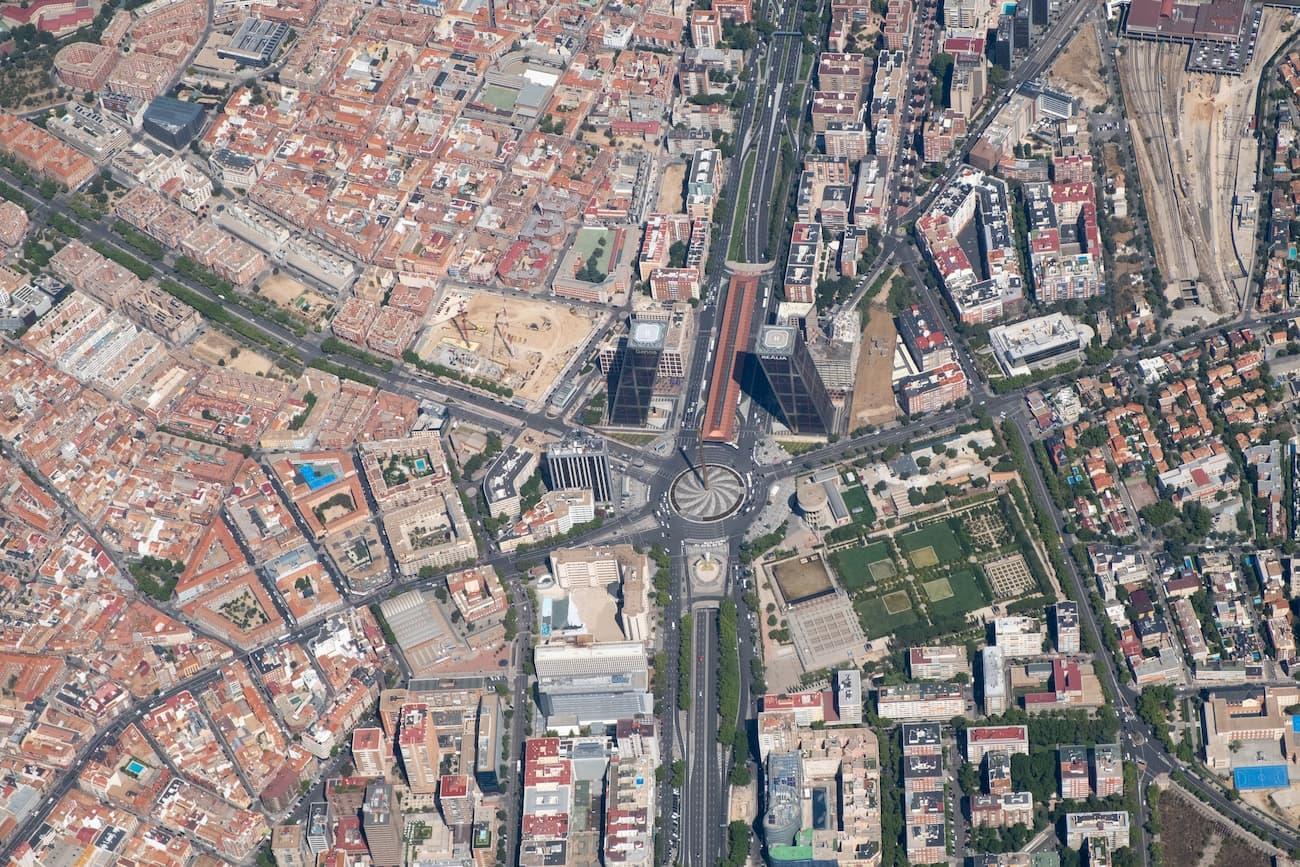In the exciting world of real estate, understanding how land is used and zoned is fundamental. At Metrovacesa, we want to dive into this key topic: the different types of land utilisation and their impact on urban and rural development. In this article, we will explore from the basics to the more complex aspects of land utilisation, from zoning regulations to the process of land use change. Read on to find out more!
Land uses and classifications
Land can be classified and categorised into large groups and according to certain characteristics. But if we want to go down to a more specific and concrete level, to define the different types of urban land utilisation, we must talk about urban zoning.
This instance allows us to establish for urban land the detailed uses of each plot, its buildability and building typology (except for those lands that are delimited as subject to special planning, where global uses will be established, and their detailing will correspond to the special plans for internal reform) and directly affects the urban land use that can be made by the owner of a given plot and, consequently, its market value.
Understanding Land Use and Zoning
Land utilisation is a cornerstone of urban planning and real estate development, shaping the fabric of our communities. It encompasses the diverse ways in which land is utilised to meet societal needs, from residential neighbourhoods to commercial districts. Zoning regulations play a pivotal role in governing land use, dictating what activities are permitted in specific areas and ensuring compatibility between land uses. In this section, we’ll delve deeper into the fundamental concepts of land use and zoning, exploring their significance and implications for sustainable development.
Land Use:
Land use refers to the actual activities or purposes for which land is utilised. It encompasses a broad spectrum of human activities, including residential, commercial, industrial, agricultural, recreational, and conservation uses. Essentially, land use defines how land is occupied and utilised by society. For example, we can differentiate between land for residential use, where houses are built and people reside, and land for commercial use, where businesses operate.
Zoning:
Zoning, on the other hand, is a regulatory tool used by governments to control and manage land use within a particular jurisdiction. Zoning ordinances divide land into different zones or districts, each with its own set of regulations and permitted land uses. These regulations typically specify what types of activities are allowed in each zone, as well as any restrictions or requirements that must be followed. Zoning aims to organise development, promote compatibility between land uses, protect property values, and enhance public health and safety.
Exploring Different Land Use Types
There is no generic legal standard for land utilisation typology, and it may vary according to each region or municipality, but the following is the most common.
Residential land
Residential land use is one of the most common land utilisations in municipal plans and refers to the accommodation of people. Within the residential use we find the use of housing, whether single-family, collective or multi-family; and the use of accommodation, which includes, in turn, community residence (buildings or premises for permanent accommodation in community regime with rooms and common areas – convents, residences, etc.) and tourist accommodation (temporary).
Industrial land
Industrial land is defined as land dedicated to housing, within a municipality, industrial estates, business parks, warehouses, factories or any establishment or company in the so-called secondary sector of the economy, i.e. land dedicated to obtaining and transforming raw materials, as well as packaging, storing, transporting and distributing them.

In the case of industrial land utilisation zones, they are usually very well specified in the municipal development plans, whose chapters detail the economic activities that are not compatible with the urban environment, with residential areas or with the use of housing.
H3: Tertiary land
Tertiary land can be used both for commerce of different types and for services in the so-called tertiary sector, which provides services to the public and includes everything from information, administration, finance, management or insurance to entertainment. Offices, car parks and garages, meeting rooms, entertainment or recreational spaces are usually included in this last typology of tertiary use.
Some urban development plans include tourist accommodation (hotels, hostels, flats, etc.) in this section and not in the temporary residential use.
Land for public use
Finally, we have the use of endowment land that every municipality must have in order to guarantee the right of its residents to a good quality of life, which is none other than that reserved for the establishment of infrastructures dedicated to providing public services or for collective use. The use of land for public services can also be of a private nature.
Within this section, several subgroups can be distinguished. The first relates to community facilities for public and social services (nursery schools, schools, colleges, institutes, universities, health centres, senior citizens’ centres, libraries, sports centres, etc.).
Secondly, there is the endowment use of open spaces, which includes parks, gardens and green areas. Thirdly, there are the road networks and the transport system of a city to make up for the use of communications facilities. And finally, the fourth subgroup refers to everything related to the use of facilities and service networks or basic urban infrastructures (water supply, sanitation, energy networks or telecommunications facilities, among others).
With the right balance between all these types of land utilisation, all cities are, or should be, designed to be perfectly liveable.

Urban vs. Rural Zoning
Zoning regulations vary between urban and rural areas to reflect their distinct characteristics and development needs:
- Urban Zoning: in urban areas, zoning regulations often prioritise mixed land use, high-density development, and access to amenities and public transportation. Zoning codes may also address issues such as building height, setback requirements, and parking provisions to ensure efficient land use and urban livability.
- Rural Zoning: rural zoning focuses on preserving open space, protecting natural resources, and supporting agricultural activities. Zoning codes in rural areas may include provisions for minimum lot sizes, setback requirements from agricultural land, and restrictions on non-agricultural development to maintain the rural character and landscape.
Changing Land Use: Process and Considerations
As communities evolve and grow, land utilisation patterns may need to change to accommodate shifting demographics, economic trends, and environmental concerns. The process of changing land use involves several steps and considerations:
- Comprehensive planning: comprehensive planning involves assessing current land use patterns, projecting future growth, and identifying areas for potential development or redevelopment. This process often involves community input, stakeholder engagement, and collaboration between government agencies and private developers.
- Zoning amendments: zoning amendments may be necessary to accommodate changing land utilisation needs. This could involve rezoning parcels of land to allow for different types of development, such as converting industrial land to mixed-use residential and commercial use or designating areas for conservation or open space.
- Environmental impact assessment: before approving changes to land use, environmental impact assessments are often conducted to evaluate the potential effects on air and water quality, wildlife habitat, and natural resources. Sustainable land utilisation practices and mitigation measures may be implemented to minimise adverse impacts.
- Community engagement: engaging with the community and stakeholders is crucial throughout the process of changing land utilisation. Public hearings, workshops, and outreach efforts can help ensure that proposed developments align with community values, address concerns, and promote equitable access to resources and opportunities.
Understanding land utilisation and zoning is essential for effective urban planning and sustainable land use and development. By exploring different land use types, recognizing the differences between urban and rural zoning, and considering the process and considerations involved in changing land use, communities can effectively manage growth, preserve natural resources, and create vibrant, resilient neighbourhoods for future generations.
Related articles
Descubre promociones que te pueden interesar
Discover your new home with MiA
We have launched our virtual agent to help you find the property you are looking for.
Ask MiA and get personalized recommendations to find your dream home. Try it now!




